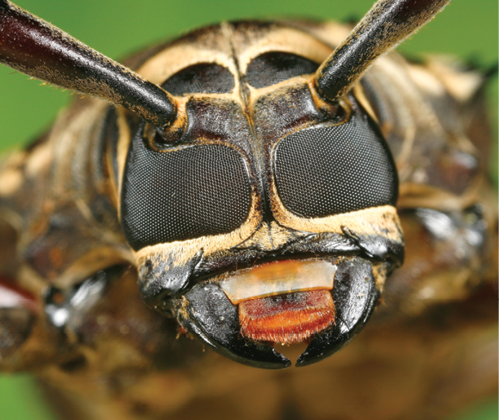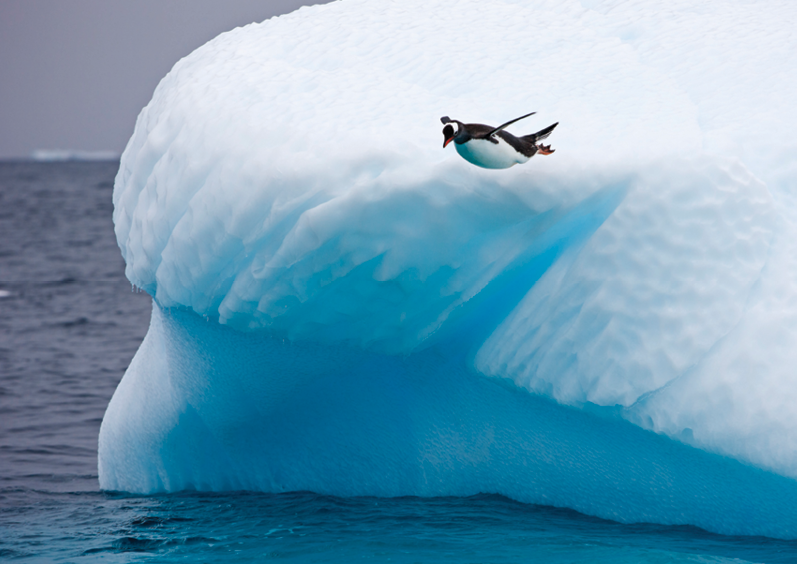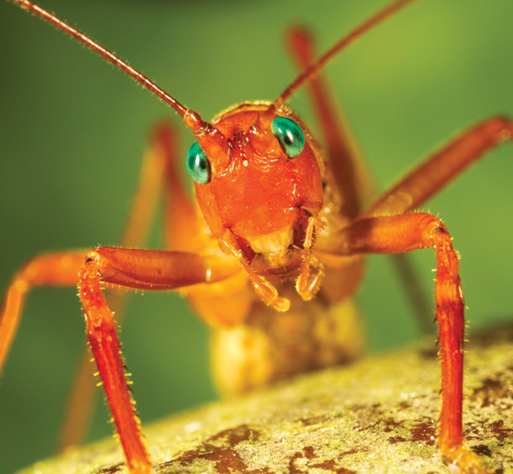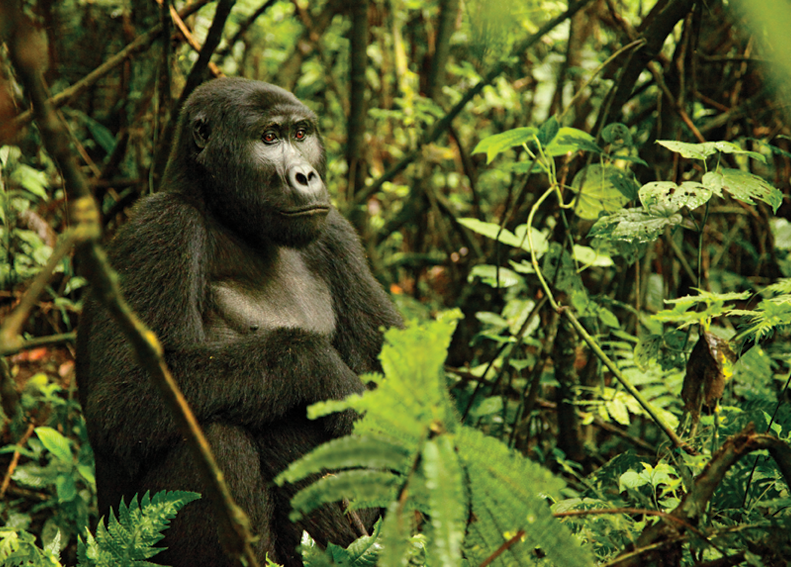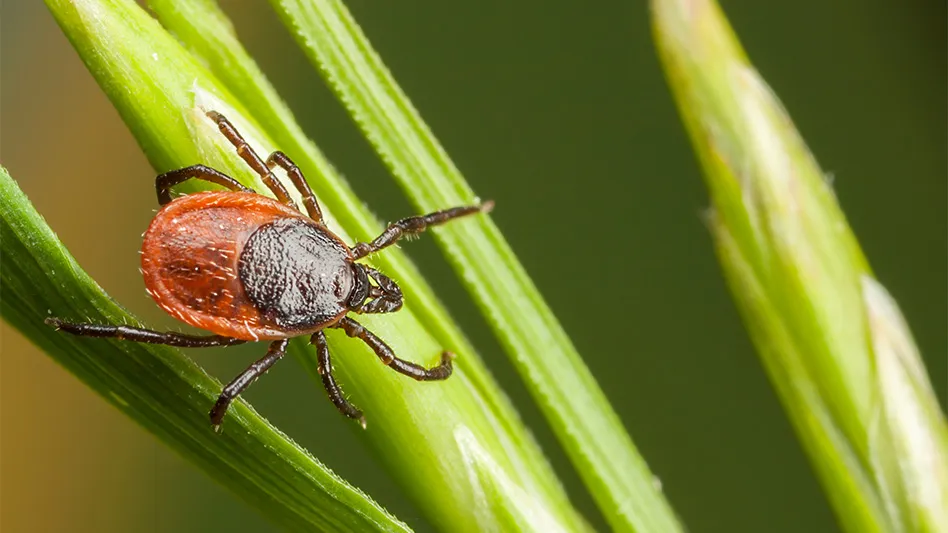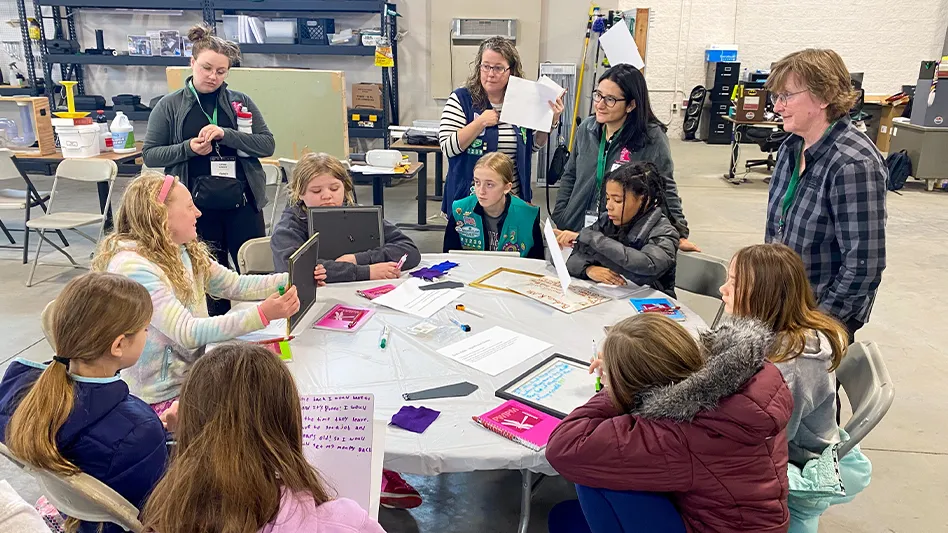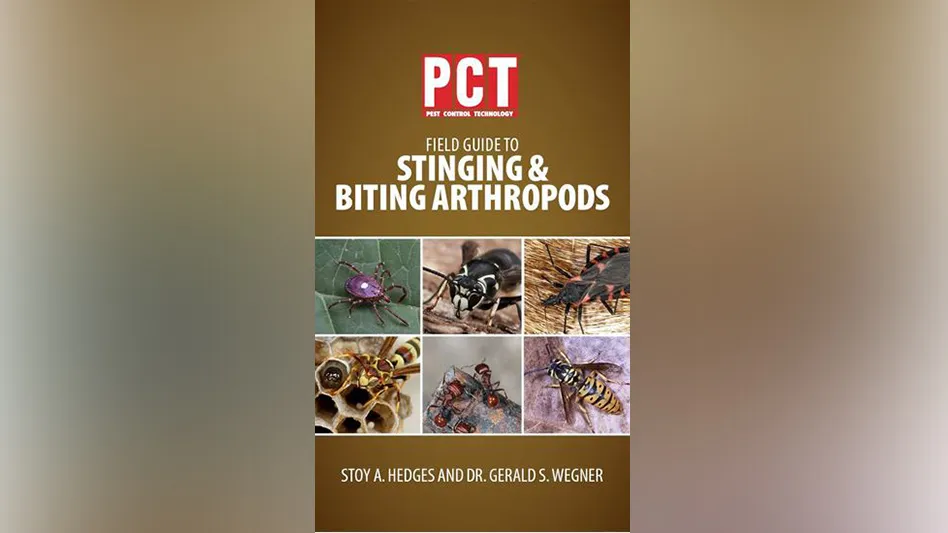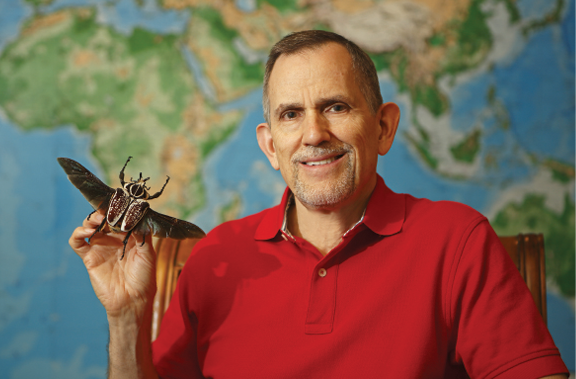
The Most Interesting Man in the World had nothing on Tom Myers. Camera gear invariably in tow, Myers has explored all seven continents, including the world’s most beautiful rain forests and most dangerous jungles. He has traveled by helicopter and dogsled to capture images of Arctic and Antarctic wildlife, climbed the mountains of Uganda in search of elusive gorilla species, and caught piranha for dinner while studying the insects of the Amazon. His photographic work has earned him worldwide acclaim and an exhibit in the Smithsonian National Museum of Natural History. He was also the first Board Certified Entomologist in Kentucky to build his own pest management business.
He doesn’t always invite family, friends or colleagues to join him on his adventure-packed expeditions, but when he does, they are…selective.
“When I ask what happens if there’s an emergency and I’m told, ‘We can get you out of there in two days,’ that’s probably not the right trip for me,” shares Myers’ wife, Waynetta, who says the African mountain gorilla trip was probably her greatest adventure. Waynetta is grateful that communication technology has improved over the past 25 years, because there was a time when she had to trust in a “no news is good news” philosophy while her husband was out in the wild.
Michael Potter, extension professor in the Department of Entomology at the University of Kentucky, shares, “When Tom suggests a trip, I have to stop and think whether my health insurance plan is comprehensive enough. He’s not talking about taking a tour bus to explore a faraway place. His plan is climbing into a dugout canoe on the Amazon and camping in the heart of the jungle. Don’t let his quiet demeanor fool you: Tom is entomology’s version of Indiana Jones.”
Only Myers isn’t afraid of snakes. Or any animal, for that matter. His willingness to ply his trade in virtually any environment, faced with virtually any animal species, is what makes him such an amazing photographer and entomologist. His photographs serve as the basis of education for entomologists and PMPs across the nation.
“Tom’s unbridled curiosity helps him capture amazing photographs that raise more questions, like the purpose of some feature of a tiny insect that’s never been seen before, even on a common, well-known pest,” says Jim Sargent, former director of technical support and regulatory compliance at Copesan. “He shoots a photo and then he studies it and thinks about what he sees. He’s always acquiring knowledge.”
And he’s always sharing that knowledge, says Mark “Shep” Sheperdigian, vice president of technical services at Rose Pest Solutions. “Whether providing images for a class or project, or out collecting with his peers, Tom shares the full breadth of his expertise, which is saying a lot because his knowledge of the natural world is extremely expansive. His generosity in helping others is amazing.”
Also amazing? His tenacity. “When most of us are going to bed, Tom is still collecting and photographing,” says Pat Hottel, technical director of McCloud Services. “His dedication to understanding insects and wildlife, and capturing images to help the rest of us understand, is remarkable.”
PHOTOGRAPHY CONNECTS US. When asked about meeting Tom Myers for the first time, nearly every person we’ve spoken with has said, “I knew of him before I knew him.” That’s because Myers’ photographic images are ubiquitous in the industry: They have been featured on the covers and within the pages of countless entomological and pest management books (e.g., PCT Guide to Commercial Pest Management and Truman’s Scientific Guide to Pest Control Operations) and publications (e.g., PCT, American Entomologist and PMP magazine), and NPMA, the Entomological Society of America (ESA) and other organizations use his images extensively for educational purposes. You would be in the minority if you had not been exposed to his work in some form or fashion.
“Through his camera lens, Tom has brought the miniature world of urban pests into clear focus. He has assisted in the training of thousands of PMPs,” says Sheperdigian. “The saying that a picture is worth a thousand words is particularly true in education. No verbal description can replace a good picture for learning and understanding. Tom’s messages are so compelling that a simple slide show can keep an audience riveted.”
Part of what makes Myers’ work so exceptional is that he shoots insects alive and in their natural habitat, says Sargent. “Many insect photographs in the past century have been dead specimens, sometimes pinned specimens from a museum. Dead specimens seldom represent the live animal adequately,” he says.
His brilliant photographic work, coupled with his vast knowledge of entomology, makes Myers a sought-after speaker for state and national conferences, training courses, university classes and seminars. He is also active in youth and public education: He has delivered hundreds of presentations to schools, scout troops, nature groups, 4-H clubs, science centers, civic groups and museums. Quite active in the national pest control fraternity Pi Chi Omega, he donates photos for the annual auction to benefit students pursuing entomological studies. Through these and other efforts, Myers has become an inspiration to many aspiring photographers and entomologists.
The artistic side of Myers’ work draws in a much broader audience, as happened when his photographs appeared in the Smithsonian. “To me, it’s all about reaching people with images they have never, and possibly will never, see in person,” he explains. “It’s gratifying to be able to share a slice of time, a one-of-a-kind moment that I was fortunate enough to experience.”
Those who have watched Myers work are amazed at the patience and precision that go into each photo shoot. “People often don’t realize the amount of time it takes to produce such extraordinary images,” says Eric Smith of E.H. Smith Pest Consulting. “When we’ve been out collecting together, I’ve seen Tom take three or four hours — sometimes more — to get the angle, lighting and positioning just right for a photograph. When we worked together on the PCT Guide to Commercial Pest Management, he took great care to ensure that he was providing images that aligned precisely with each author’s needs. He is meticulous in capturing the features and behaviors critical to our identification and understanding of insects.”
Sheperdigian shares the story of a 2008 expedition to Durban, South Africa, where he, Myers, Smith, Sargent and other entomologists attended a meeting of the International Congress of Entomology. One of the museums was featuring an exhibit of the extremely rare Mantophasmatodea (heelwalker). Myers had arranged a special tour so he could get some photographs.
“He spent hours getting the shots he wanted,” says Sheperdigian. “As the rest of us nervously paced, waiting for him to finish, Tom never lost focus. We stayed so late after the museum had closed that we had to be ushered through back hallways and out the back door. The images were, of course, magnificent, but what was most incredible to us was the painstaking care he puts into his work.”
Sargent shares a similar story of a 2010 trip to Pico Bonito National Park in Honduras. “Tom suggested that we hike a rain forest trail to see what we could find,” he recalls. “We hadn’t gone far when he got down in the mud to photograph a column of leaf-cutting ants. Gerry Wegner and I watched until Tom suggested that we continue down the trail. He would catch up with us soon, he said, if we walked slowly.” Long story short, Myers did not catch up; Sargent and Wegner went back for him a couple of hours later to find him still engaged with the ants. “This experience is typical of Tom,” concludes Sargent. “He’s hard-working, patient and observant, and will take as long as needed to obtain the very best outcome, whether it’s a photo or a customer’s pest problem.”
BACKDROP TO A COLORFUL CAREER. Myers became interested in photography in high school, and began perfecting his skills during his undergraduate years at Purdue University. His first coup was a press assignment photographing the Indy 500; he and his roommate also took plenty of photos capturing the people and events on campus. Still, Myers’ favorite subjects were always animals — not surprising, given he grew up on a farm in southern Indiana.
“My three brothers, two sisters and I had great opportunities to find snakes, bugs and wounded animals,” he says. “My sister Nancy and I were especially interested in animal life. Lucky for us, our mom had been exposed to entomology when she worked at a part-time summer job at a research orchard, so she understood our passion. She even let us use our second refrigerator as a home for our snakes. When they were cool, we didn’t have to feed them as often.”
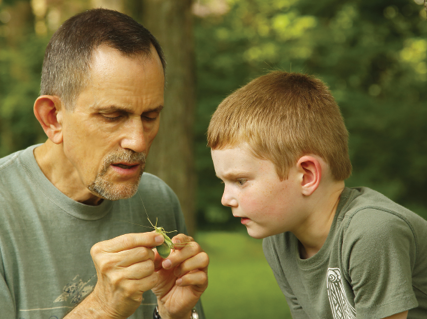
Myers’ dad wasn’t quite as sure about his son’s entomological bent. “One day when we were digging postholes to put up a fence, and I was more focused on what was going on under the rocks, my dad said, ‘Leave those bugs alone! They’ll never make you a living,’” Myers shares. “My dad, now 89, laughs when he tells this story today. He actually shares my passion for wildlife and paints some beautiful wildlife and outdoor scenes. We do a lot of fishing together, too, throughout the Eastern U.S. and in Canada. Once we had an amazing time in Brazil together — fishing for peacock bass in the Amazon.”
Myers earned a bachelor’s in entomology at Purdue University and master’s in entomology and insect pest management from Iowa State. He worked on alfalfa weevil and leafhopper research at Purdue, and focused on moth pheromone studies, insect overwintering studies and population prediction studies in graduate school. His first published photographs appeared in Purdue extension publications. (Decades later, he continues to support Purdue’s photographic needs, whether for their website, publications or offices.)
Following college, Myers became involved in planning efforts for the University of Kentucky Pest Control Short Course and worked with the university on efforts that awakened his interest in two areas that became pivotal to his career: (1) biodiversity research and (2) urban pest management. The former took him deep into the rain forests of South America, Africa and Asia, which led to the discovery of numerous new species of insects and one new genus. (Two species of leafhoppers — Hirsutapona myersi and Balera myersi, both discovered in Ecuador — were named after him.) The latter experience also inspired Myers to build a family business that continues to thrive today.
A SELF-SUFFICIENT BUSINESS. When Myers bought a Lexington-based, one-man pest management company in 1975, the first few years were difficult. He didn’t even take a paycheck in the winter months. But his expertise and commitment to customers spurred steady growth, and today, All-Rite Pest Control employs about 20 people in two offices — just the right size, Myers says, to provide a good living for his family and employees without cutting into his exploration time. His daughter Kristin helps run day-to-day operations.
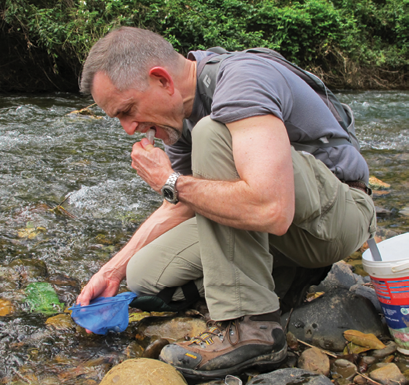
“I invited Kristin to join the company in 2000, when she was graduating from Murray State University with a business degree,” says Myers. “She started managing the numbers and then stepped up to run the office. I’m still involved, but I have no regular schedule.”
That’s no issue for Myers’ staff, who learned early on to keep the wheels in motion while Myers was off exploring and photographing. “I’ve educated and empowered our people to make their own decisions. Sure, they could make mistakes — but I make mistakes, too! I set the business up to run without me. Our team does a great job.”
Kristin Fore shares, “I had envisioned myself joining a big corporation, so when I came to All-Rite, my intent was to stay a few years and then move on to something else. But I love the people and the business so much that I’ve decided to stay. I’ve been here 16 years and counting.”
Fore says that the corporate culture and stability of All-Rite encourage employees to stay. “We are respectful of one another and recognize the importance of family and personal obligations. When one of us needs support, the rest of us rally to help in any way we can,” she explains. “Many of the people on our team have been here 20 or 30 years.”
In fact, two employees, Charlie Asberry, service manager of All-Rite’s Lexington office, and Brian Franklin, who runs the Versailles office, have been integral to Myers’ team for more than 35 years.
“Part of being an effective leader is having people on your team who have the faith in you to follow,” says Myers. “I’ve been blessed to have wonderful, knowledgeable people like Charlie and Brian choose to make their careers at All-Rite.”
In addition to serving the communities of Lexington and surrounding counties, All-Rite is a key partner of the research and extension arm of the University of Kentucky. Potter explains, “All-Rite’s collaboration with UK has been pivotal to our work in the field. Among other efforts, Tom’s team played a vital role in demonstrating the efficacy of backyard mosquito sprays as well as perimeter treatments for termites.”
A LEADER AND ROLE MODEL. In spite of his impressive adventures and world acclaim, Myers remains a humble, soft-spoken family man who inspires colleagues, friends and family alike.
He married his high-school sweetheart, Waynetta Callaway, 44 years ago. The two attended Purdue together, and she went on to teach preschool, which helped him get his business off the ground. They have two daughters, Kristin Fore, mentioned previously, and Sarah Best, who is the executive director of global sales at MGM Resorts International. Both have traveled with Myers to faraway places.
Fore recalls traveling to a research station in Guatemala when she was 12. “Being fully immersed in that experience, from collecting insects to sleeping under mosquito nets, helped me understand how special my father is,” she says. (Fore’s husband, Andrew, also has shared Arctic and other photographic adventures with Myers.)
He is, in fact, special to everyone who knows him. Waynetta says that her husband has always been patient and encouraging at home, and Sheperdigian says that Myers inspires his friends and peers. “I have never heard Tom speak a single disparaging word about anyone. He is spiritual in his treatment of others and unflappable in the face of adversity. He has taught me how to be a better human being,” he says.
Gary Bennett, professor of urban pest management at Purdue, who has worked with Myers on many projects over the years — among them, Truman’s Scientific Guide to Pest Control Operations and the Purdue Pest Management Conferences — applauds Myers’ industry leadership. “My wife, Milta, and I have known Tom and Waynetta since they were students at Purdue. Through our work as well as social events, we have come to know one another very well,” he shares. “Tom has always been a strong industry leader, and his talents continue to serve the pest management industry well.”
Adds Sargent, “Tom has had a huge impact on my career and life. He’s made me a better person by causing me to observe, think and do more. He’s also made me look good by providing ideas and materials for presentations, programs and meetings. He’s a good friend.”
Indeed. Tom Myers is the friend who never hesitates to lend a hand, share a kind word, and put his own safety on the line in the name of knowledge and beauty. Keep the good stuff coming, Tom, and, above all else: Stay thirsty, my friend.

Explore the October 2016 Issue
Check out more from this issue and find you next story to read.
Latest from Pest Control Technology
- Viking Pest Control Organizes a Charity Bike Build for Local Families
- Gaining Control of Structure-Infesting Carpenter Ants
- Big Blue Bug’s Brian Goldman Receives Rhode Island Small Business Person of the Year Award
- UF Researchers Examine How Much Bait it Takes to Eliminate a Subterranean Termite Colony
- Women in Pest Control Group Continues to Grow, Provide Opportunities in the Industry
- NPMA Announces Results of 2024-2025 Board of Directors Election
- Massey Services Acquires Orange Environmental Services
- Hawx Pest Control Wins Bronze Stevie Award for Sustainability
